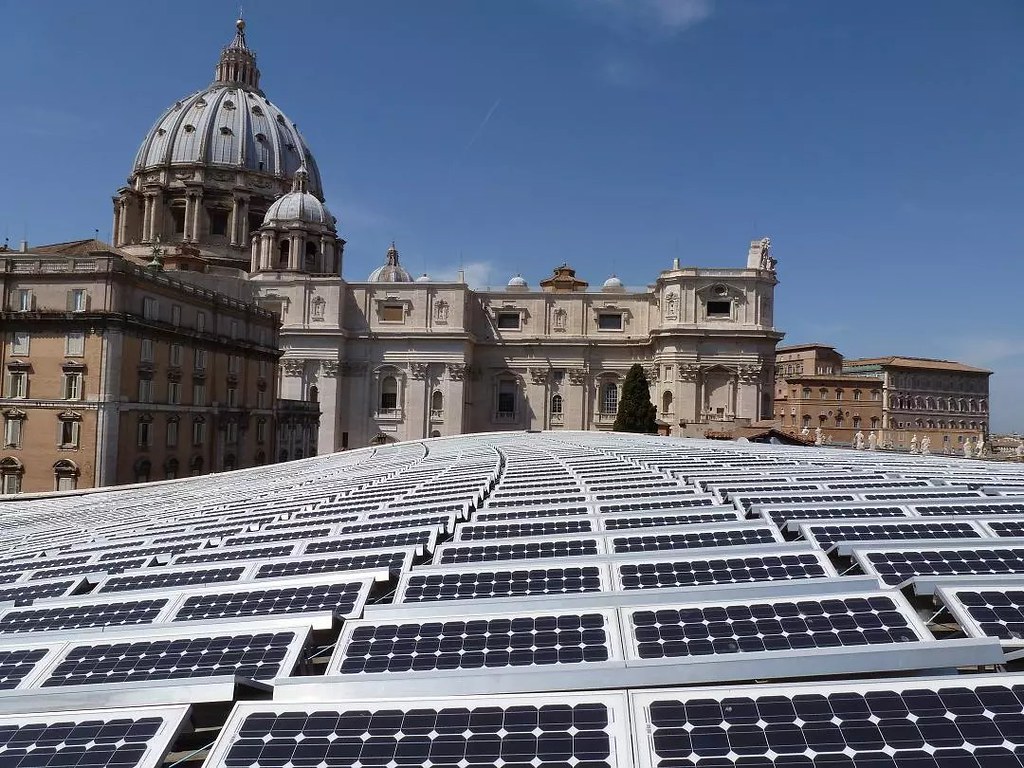
To demonstrate commitment to carbon reduction, the Paris Agreement requires countries to update their Nationally Determined Contributions (NDCs) every five years. The Vatican released its latest NDC on the 16th , pledging to reduce greenhouse gas emissions by 28% by 2035 compared to 2011 levels.
Since Pope Leo XIV took office in May, public attention has focused on his environmental and climate policies. At the end of July, the Vatican reached an agreement with the Italian government to build a large-scale, integrated agri-electric solar park on approximately 430 hectares of land north of Rome, providing the Vatican with renewable energy.
Continuing the Vatican's green vision, a photovoltaic power plant is planned to help it achieve carbon neutrality.
Although a small country, the Vatican's carbon emissions are modest. However, as the center of faith for 1.3 billion Catholics worldwide, its every action has a significant global impact. In 2022, the Vatican joined the United Nations Framework Convention on Climate Change and the Paris Agreement, continuing its carbon reduction efforts.
In June of last year (2024), former Pope Francis issued a decree announcing a transition to solar energy as the primary source of electricity. He also instructed relevant authorities to collaborate with the Italian government to establish an agricultural electricity symbiosis system in the parish of Santa Maria di Galeria. The Vatican expects this project to make the Vatican the eighth country in the world to achieve 100% renewable energy.
Pope Leo XIV, who succeeded Pope Francis after his death in April, took on the task and made it clear he would continue Francis's vision. In late July, Vatican Foreign Minister and Archbishop Paul Gallagher and Italian Ambassador to the Vatican Francesco Di Nitto signed an agreement to jointly promote the solar photovoltaic project.
Santa Maria del Galleria has previously garnered attention due to the controversy surrounding the Vatican Radio transmission tower. Residents alleged excessive levels of radiation, posing health risks. In 2012, due to the increased availability of online radio, the Vatican announced the end of broadcasts to South America, North America, and Europe. A July report in Vatican News stated that the photovoltaic park will strive to minimize environmental impact, preserve the natural landscape, maintain hydrogeological balance, and protect cultural heritage.
The Associated Press reported that the land is located on Italian soil but is extraterritorially owned by the Vatican within Italy. The photovoltaic park's development budget is less than €100 million (approximately NT$3.48 billion) and still requires approval from the Italian Parliament.
Leo XIV continues the green mantle.
The Vatican's latest NDC did not explicitly mention any new large-scale photovoltaic projects, but it did indicate that it has supported sustainable development through electric vehicles and the installation of solar glass curtain walls at the Vatican Museums. In the future, it will also reduce carbon emissions through multiple channels such as waste management and energy efficiency.
In 2008, Pope Benedict XVI approved the installation of 2,400 solar panels on the roof of the Paul VI Hall in the Vatican to provide lighting, heating and cooling. In recent years, the Pope has prioritized environmental protection and has worked to reduce his carbon footprint.
Forbes reported that Leo XIV inherited Francis' "green" mantle, declared the world to be in a "global climate emergency", urged fossil fuel companies to adjust their investment portfolios, and publicly expressed support for clean energy investment.
Source: Environmental Information Center
Website: 梵蒂岡擬建光電場 教宗良十四世延續綠色衣缽發布減碳目標 | 環境資訊中心
Disclaimer:
1.The articles compiled and published by this association on the Taiwan Net Zero Emissions Association's official website and in the Member Biweekly Report are for the purpose of introducing international environmental trends and for educational use only, not for profit.
2.Any legal responsibilities or losses resulting from the use or adaptation of articles translated by the association shall be borne solely by the user or adapter.
For more insights on net-zero emissions, feel free to subscribe to our biweekly newsletter:
https://www.tnzea.org.tw/eforms.php?lang=tw&tb=1


